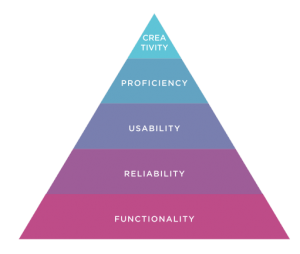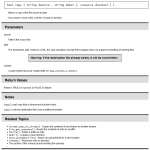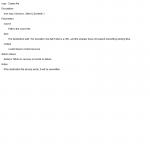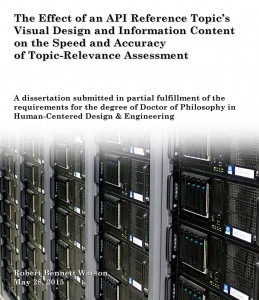
Devin Hunt posted this figure from “Universal Principles of Design,” which is an adaptation of Maslow’s Hierarchy of Needs for design. It seemed like they could also apply to technical writing. Working up from the bottom…
Functionality
As with a product, technical content must work. The challenge is knowing what that actually means and how to measure it. Unfortunately, for a lot of content, this is fuzzy. I’m presenting a paper next month that should help provide a framework for defining this, but, as with Maslow’s triangle, you must do this before you can hope to accomplish the rest.
For technical content, like any product, you must know your audience’s needs to know what works means. At the very least, the content should support the user’s usage scenarios, such as getting started or onboarding, learning common use cases, having reference information to support infrequent, but important, usage or application questions. What this looks like is specific to the documentation and product.
Reliability
Once you know what works means, then you can tell if it does and determine if it does so consistently. Again, this requires knowledge of the audience–not unlike product design.
This is tough to differentiate from functionality, except that it has the dimension of providing the functionality over time. Measuring this is a matter of tracking the functionality metrics over time.
Usability
Once you know what content that works looks like, you can make sure it does so consistently and does so in a way that is as effortless as possible.
Separating usability from functionality is a tough one in the content case. If content is not usable, does it provide functionality? If you look close, you could separate them out. For example, a content set can have all the elements that a user requires but they can be difficult to find or navigate. Likewise, the content might all exist, but be accessible in a way that is inconvenient or disruptive to the user. As with product development, understanding the audience is essential, as is user testing to evaluate this.
Proficiency
Can readers become expert at using the documentation? One could ask if they should become experts, but in the case of a complex product that has a diverse set of features and capabilities, it’s not too hard to imagine having a correspondingly large set of documentation to help users develop expertise.
What does this look like in documentation? At the very least, the terms used the documentation should correspond to the audience’s vocabulary to facilitate searching for new topics.
Creativity
Not every product supports creativity, nor does every documentation set. However, those that do make the user feel empowered and are delightful to use. A noble, albeit difficult, goal to achieve, but something worthy of consideration.
This might take the form of community engagement in forums, or ongoing updates and tips to increase the value of the documentation and the product to the audience.







![Photo by Tammy (Weekend with Dee) [CC BY 2.0 (http://creativecommons.org/licenses/by/2.0)], via Wikimedia Commons Photo of a tiny house. Is less more or less or does it depend?](https://docsbydesign.com/wp-content/uploads/2015/05/Tiny_house_Portland-199x300.jpg)



